Introduction
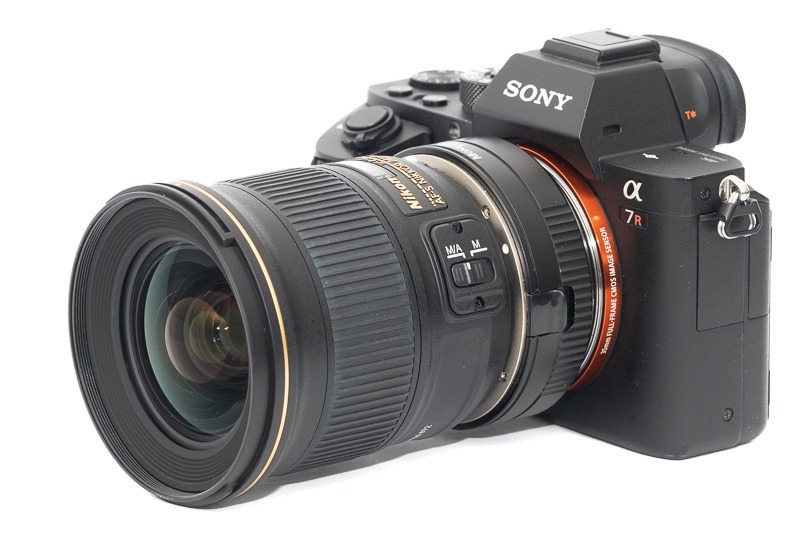
The last f/1.8 prime Nikon released during the AF-S era was this Nikon AF-S 24mm 1.8G from 2015. This would have been a great 35mm equivalent for DX shooters, but it was simply too late to the party for that. Some reviewers claimed this 24mm 1.8G to be a better lens than the five years older Nikon AF-S 24mm 1.4G. But is that really the case? Let’s find out in this review.
Sample Images

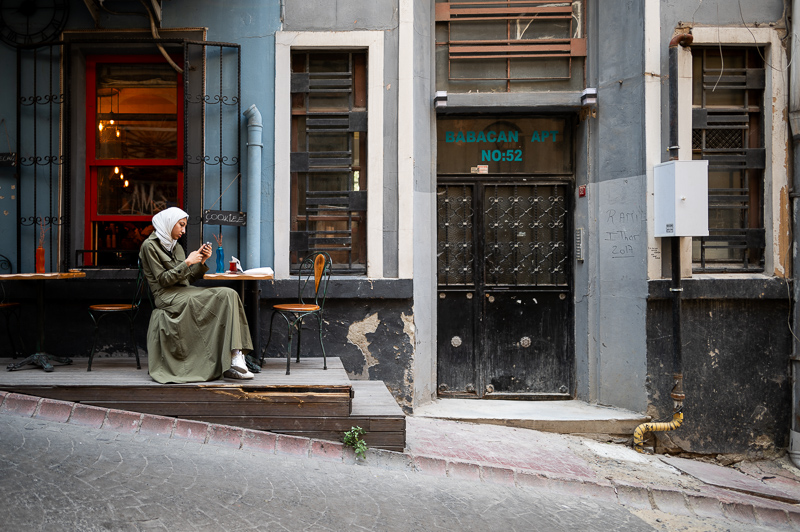

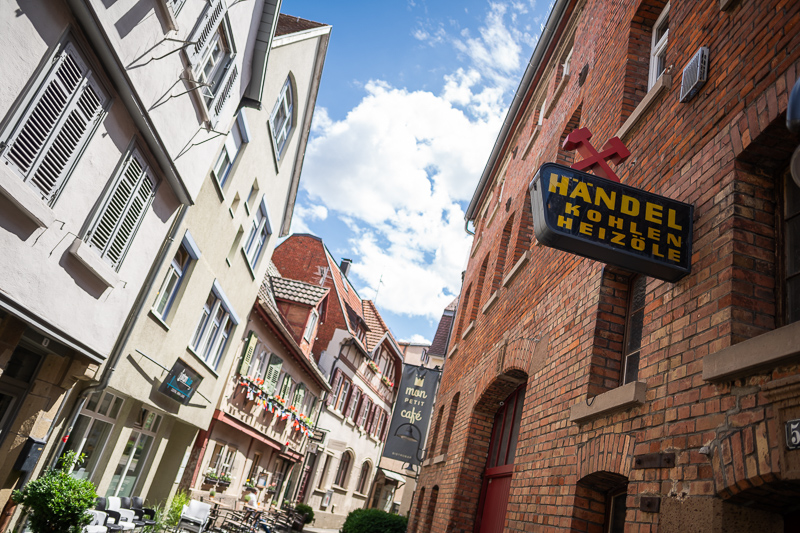
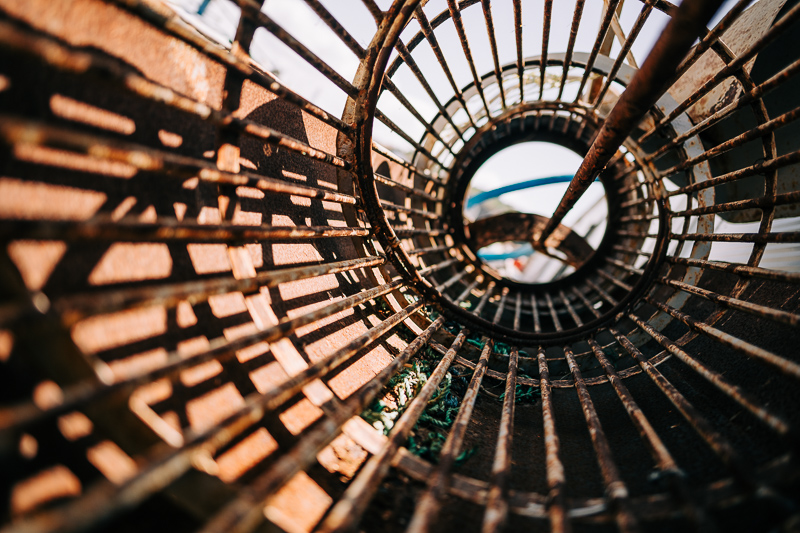
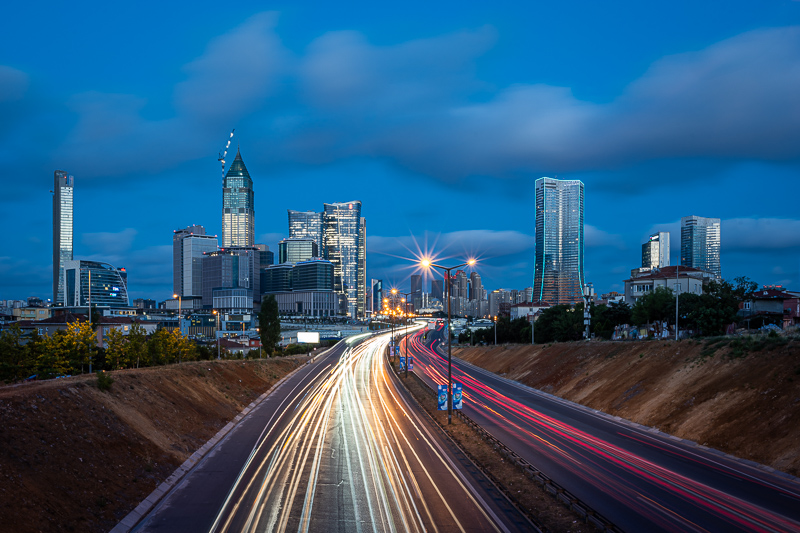
You can find many of the sample images in full resolution here.
Contents
Specifications / Version History
The Nikon AF-S 24mm 1.8G was the last lens of Nikon’s f/1.8 AF-S prime line up when released in 2015. Its full specifications are:
-
- Diameter: 78 mm
- Field of view: 84° (diagonally)
- Length: 83 mm
- Weight: 352g (without hood, without caps)
- Filter Diameter: 72 mm
- Number of Aperture Blades: 7 (rounded)
- Elements/Groups: 12/9
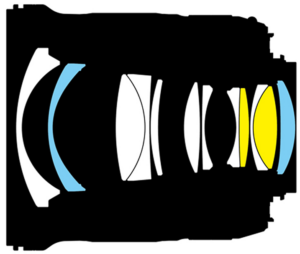
- Close Focusing Distance: 0.23 m
- Maximum Magnification: 1:4.1 (measured)
- Mount: Nikon F
buy from Amazon.com | Amazon.de | ebay.com | ebay.de | B&H (affiliate links) for $680 (new) or starting at $400 (used)
Handling/Build quality

The outer casing seems to be mostly made from high quality polycarbonate which is also true for the filter thread. There is a rubber gasket to be found at the bayonet.
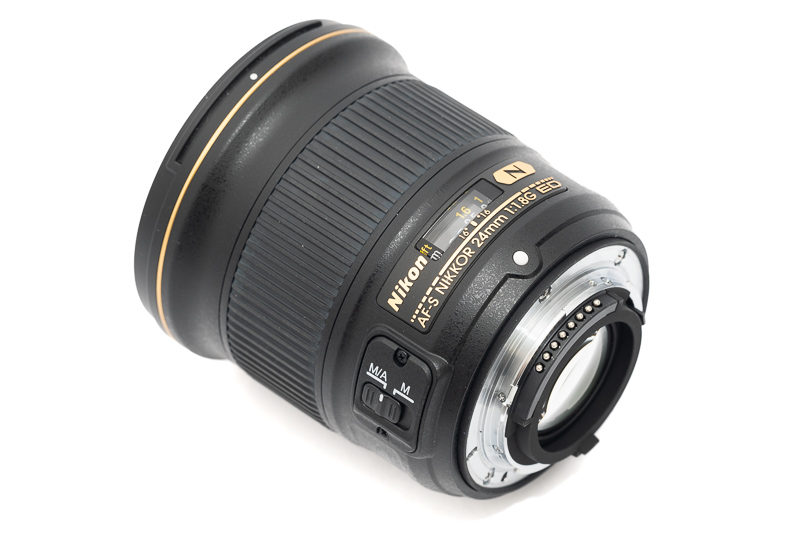
The focus ring features a mechanical coupling to the helicoid (no focus by wire) and it takes about 45° from the minimum focus distance (0.25 m) to infinity. Now 45° does sound little, but I surprisingly didn’t get the feeling that it was too little.
The resistance is okay, definitely not as nice as a real manual lens or some of Sigma’s better AF lenses.
Many Nikon AF-S G-lenses show some slack when changing the direction of rotation on the focus ring and this 24mm 1.8G is definitely one of those. In this regard it is actually one of the worst I came across so far and therefore setting precise focus manually is not a great joy with this lens.

A bulky, plasticky bayonet type lens hood it also part of the package. It can be mounted reversed for transport.

This Nikon AF-S 24mm 1.8G is part of Nikon’s more affordable f/1.8 line up together with the 20mm 1.8G, 28mm 1.8G, 35mm 1.8G, 50mm 1.8G and 85mm 1.8G.
This is a “G” lens – which means it doesn’t feature an aperture ring – so you need an adapter with built-in aperture control to be able to change the aperture value when using this lens on an E-mount camera like I did here. With the Monster LA-FE1 and LA-FE2 adapters also the autofocus will work on Sony cameras.
If you are a Z-mount user this lens also works flawlessly on the FTZ adapters.
AF performance
I tested the AF with the Monster LA-FE1/2 adapters on Sony E-mount cameras. Here the AF worked surprisingly well – much better than I would have expected – but then I am also not shooting sports or fast moving animals/humans and I don’t think the lens could keep up with that, as these AF-S f/1.8 primes are generally not very fast focusing lenses.
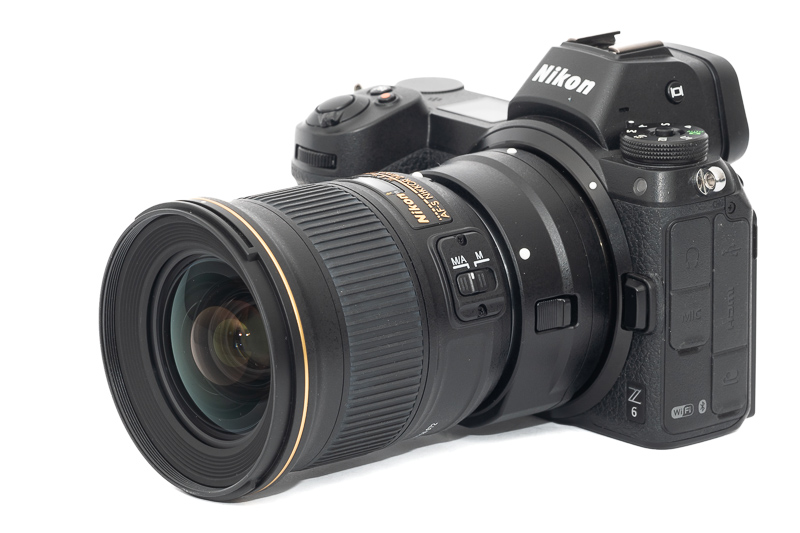
Via the FTZ adapters on a Nikon Z-mount camera it works just as well as on an F-mount camera, but it is still a rather slow focusing lens.
Vignetting
light falloff
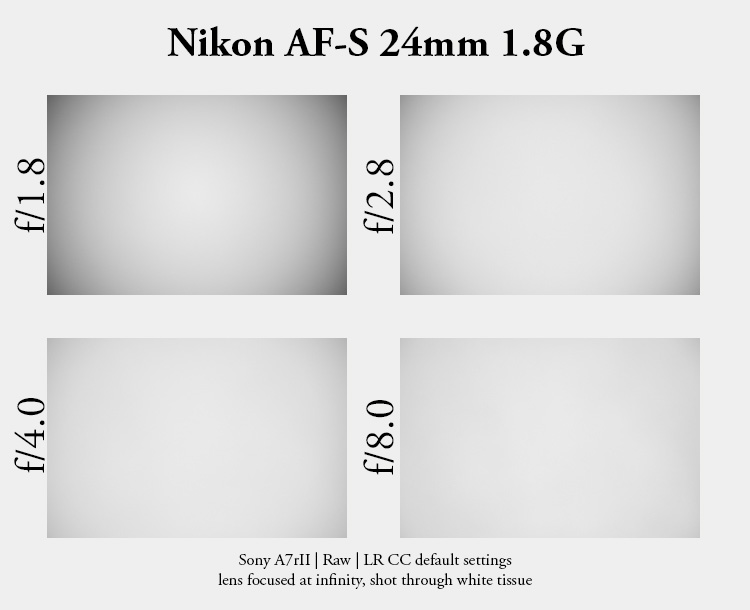
| f/1.8 | 2.7 EV |
| f/2.8 | 2.0 EV |
| f/4.0 | 1.6 EV |
| f/5.6 | 1.3 EV |
| f/8.0 - f/16 | 1.1 EV |
There are no real surprises here. This Nikon AF-S 24mm 1.8G shows slightly higher vignetting figures than the Nikon AF-S 24mm 1.4G at shared apertures. Looking at mirrorless designs, the Nikon Z 24mm 1.8 S shows about half an EV less vignetting, whereas the Samyang AF 24mm 1.8 FE shows about one EV more stopped down.

It is recommended to have a look at this article first to get an idea how this brightness graph works.
optical vignetting
Fast lenses usually show a noticeable amount of optical vignetting. Without going too much into technical details optical vignetting leads to the truncation of light circles towards the borders of the frame.
In the center of the frame almost every lens will render a perfect circle, but only lenses with very low optical vignetting will keep this shape in the corners.
So in the following comparison we move from the center (left) to the extreme corner (right) and see how the shape of the light circle changes.
Optical vignetting is not really a problem with this lens, which was already the case for the Nikon AF-S 24mm 1.4G and the Sony FE 24mm 1.4 GM.
The optical design features two aspherical elements which can lead to faint onion ring structures.
Sharpness
MTF-Graphs
When the Nikon AF-S 24mm 1.4G was released in 2010, it was considered the best performing 24mm lens you could mount on your F-mount camera. A lot has happened since then and in the meantime we have seen some 24mm lenses with even more impressive performance, especially at wider apertures.
According to their MTF graphs this slower Nikon AF-S 24mm 1.8G actually shows a better performance at f/1.8 than the Nikon AF-S 24mm 1.4G with a slightly better center performance and noticeably better performance in the corners. Let’s have a look how these MTF graphs translate to real world performance in the following sections.
Most MTF-Graphs show calculated values that do not take into account manufacturing tolerances and sample variation. Furthermore they are usually calculated for infinity, so in the field and shooting at different distances a noticeable variation may be visible.
Focus Shift
With some lenses on stopping down the focal plane shifts to the front or back, which can be an issue on (D)SLRS. Here I do not see any focus shift.
infinity (42mp Sony A7rII)
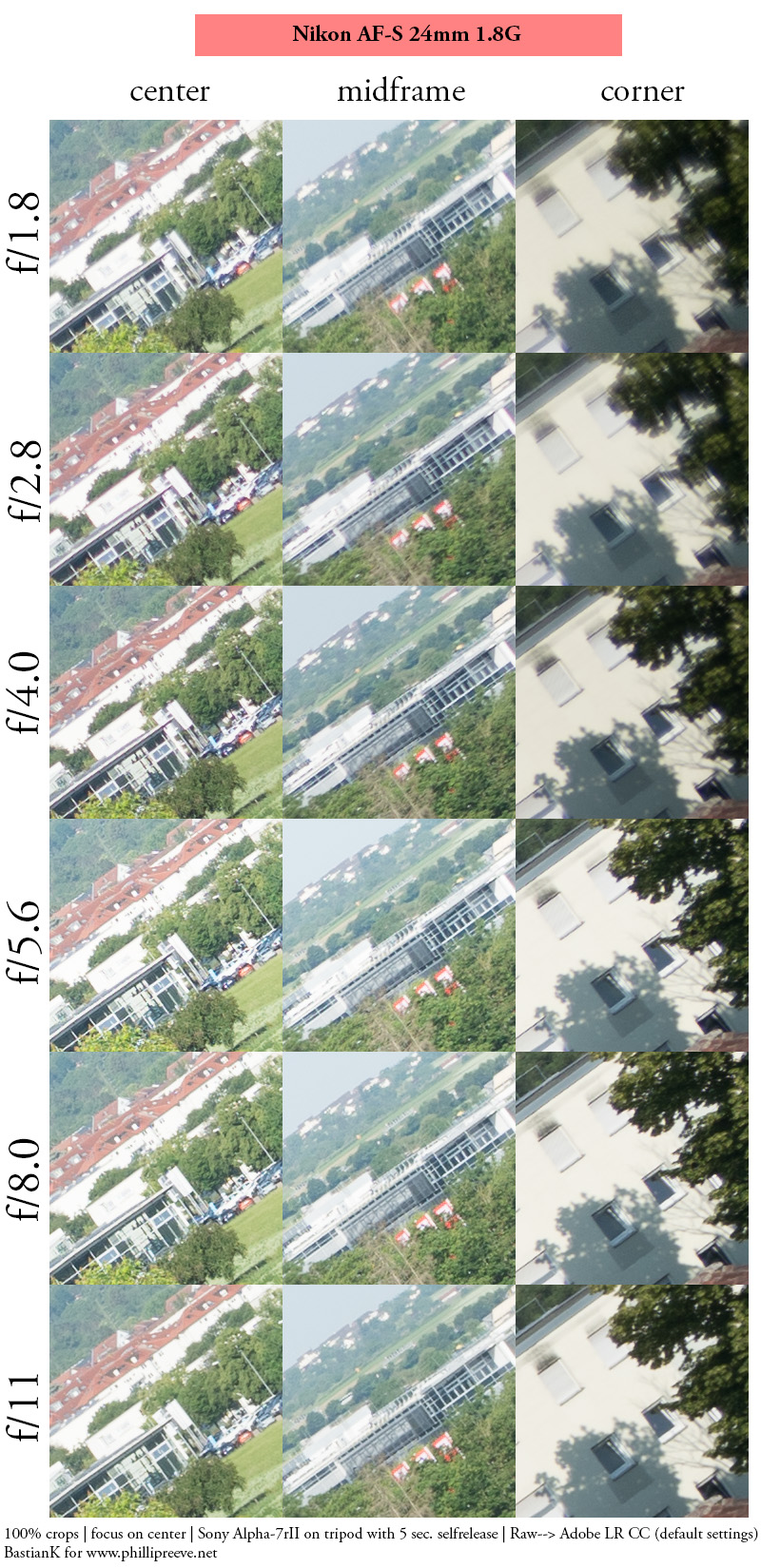
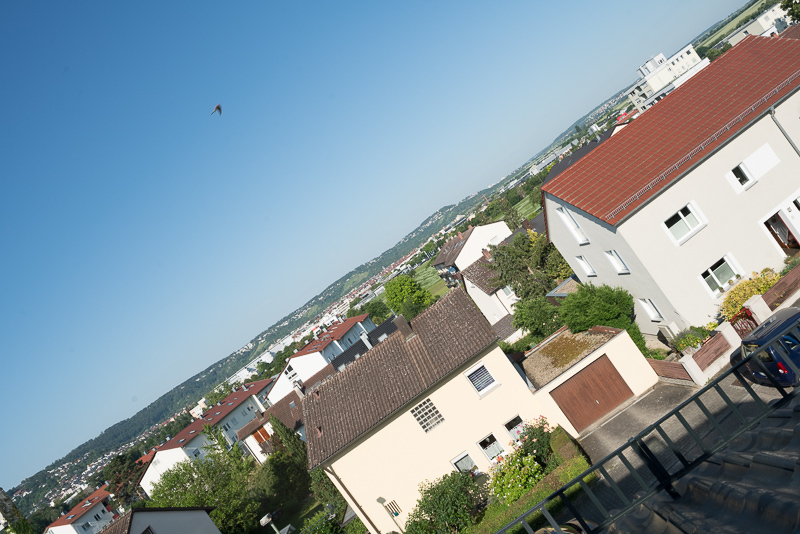
So, does this Nikon AF-S 24mm 1.8G really perform better at infinity than the Nikon AF-S 24mm 1.4G as the MTF graphs promised? Yes, this is actually the case. The corners look indeed better here. It takes stopping down to f/5.6 for the f/1.4 lens to somewhat catch up. In the center and midframe area I don’t see enough of a difference to get excited about though.
The latest Nikon Z 24mm 1.8 S performs as you would expect from a modern, expensive f/1.8 lens: at f/1.8 it looks better than both the older DSLR lenses and at f/2.8 it looks great everywhere. The Samyang AF 24mm 1.8 FE needs stopping down to f/4.0 to look great across frame – if you managed to find a good sample.
portrait distance (0.9 m, 42mp Sony A7III)
For portraiture it isn’t so important how flat the field is, it is more interesting to see what the sharpness is like when focused at different parts of the frame to take field curvature out of the equation.
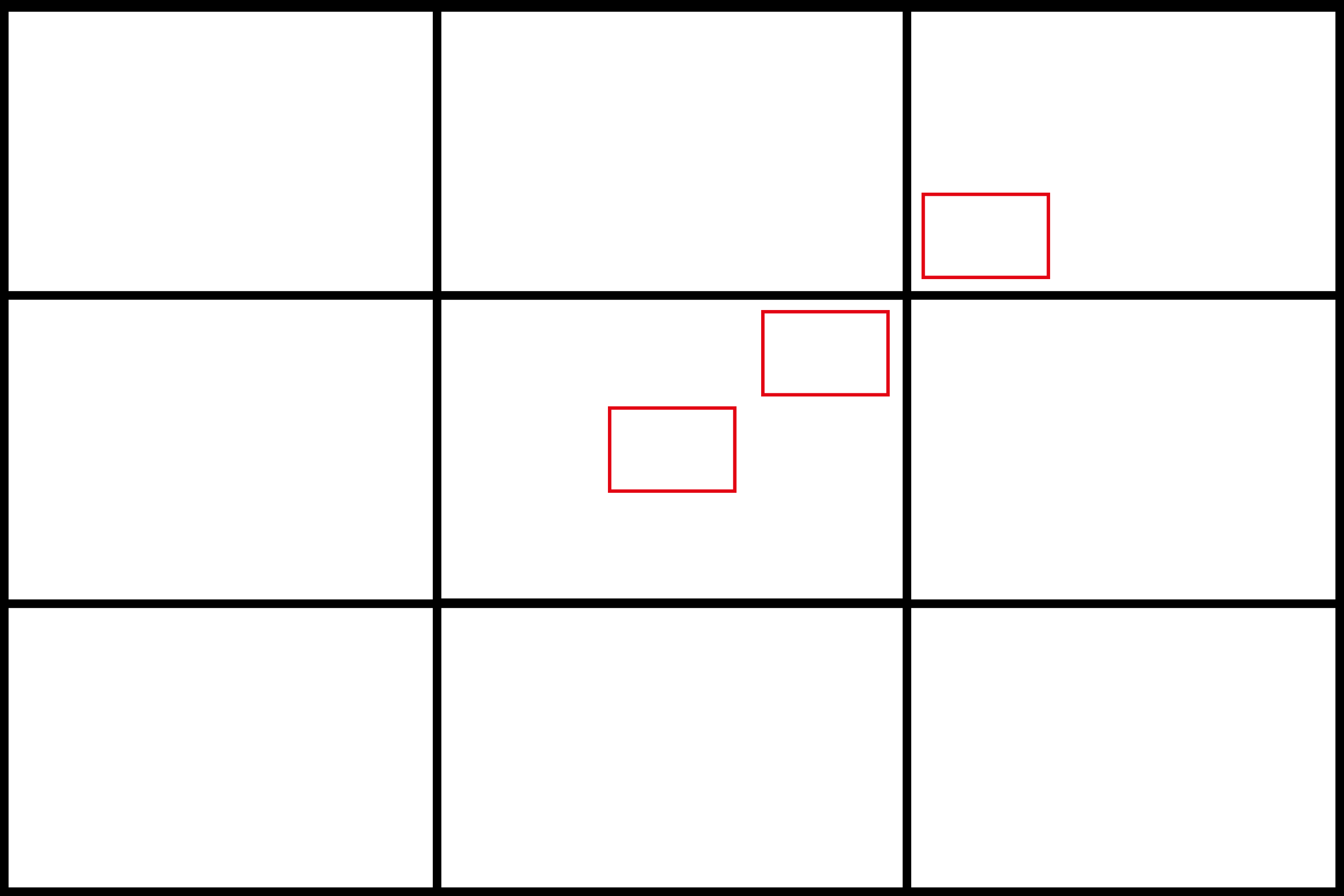
This is what I did here, I refocused for every shot and aperture to get the best possible result at different locations in the frame (center, inner midframe and outer midframe).
Focus distance was roughly 0.9 m and the circle of the dollar bill is more or less the size of a human eye.
f/1.8 <————> f/2.8
The thing with MTF graphs is, most of them only tell you something about a lens’ performance at infinity. And most reviews also only check a lens’ performance at one distance. If you are mainly taking landscape/architecture pictures it is probably sufficient to know about the infinity performance, but when it comes to fast 24mm lenses, I would also be interested in its performance at portrait distances, as I would also be using it for environmental portraits.
And here the interesting thing that no review so far told you: the Nikon AF-S 24mm 1.4G looks noticeably better at f/1.4 than this lens at f/1.8 at these distances. Especially in the outer midframe this f/1.8’s performance is a bit lacking, the f/1.4 lens looks better at f/1.4 than the f/1.8 lens stopped down to f/2.8.
Also the Samyang AF 24mm 1.8 FE shows a better performance here, as does the Nikon Z 24mm 1.8 S.
close (0.25 m, 1:4.3, 42mp Sony A7rII)
Despite offering the nominally same minimum focus distance as the Nikon AF-S 24mm 1.4G – and a worse minimum focus distance than the Samyang AF 24mm 1.8 FE – this Nikon AF-S 24mm 1.8G is actually the closest focusing of the bunch.
It is a bit soft at f/1.8, f/2.8 looks already much better and f/4.0 really good. The Nikon AF-S 24mm 1.4G and the Samyang AF 24mm 1.8 FE actually look a bit better at f/2.8
Flare resistance
As always evaluating flare is a complex matter since you can get any lens to look bad if you push it hard enough and a slight change of scenario can affect results a lot.
This is also a category, where the Nikon AF-S 24mm 1.4G had some issues, can the same be said about this slower f/1.8 lens?
With this lens I only managed to create some tiny artefacts, even when trying to fabricate scenarios where they show up.

It also doesn’t matter when the lens was shot wide open or stopped down and I didn’t use the hood for any of these pictures either.
So here the Nikon AF-S 24mm 1.8G definitely shows a better performance than the Nikon AF-S 24mm 1.4G. The latest Nikon Z 24mm 1.8 S shows a performance just as good as this older f/1.8 lens.
Coma
This is a category where the three wide AF-S f/1.8 primes all show a very similar performance with similarly sized artefacts at their maximum aperture. Here this 24mm 1.8G also looks better at f/1.8 than the 24mm 1.4G at f/1.4, but from f/2.8 there is only very little difference between these two.
This is a category where the Samyang lenses usually fare well and this is also the case for their AF 24mm 1.8 FE, which corrects this aberration almost perfectly from f/1.8, same is true for the Nikon Z 24mm 1.8 S as well.
Distortion
The Nikon AF-S 24mm 1.8G shows some wavy barrel distortion. A correction profile – which is doing a good job – is available e.g. in Lightroom. If you are using this lens via the FTZ adapter the profile will automatically be applied in Lightroom and cannot be turned off.
Bokeh

As usual we will have a look how the lens performs at different distances and in different scenarios.
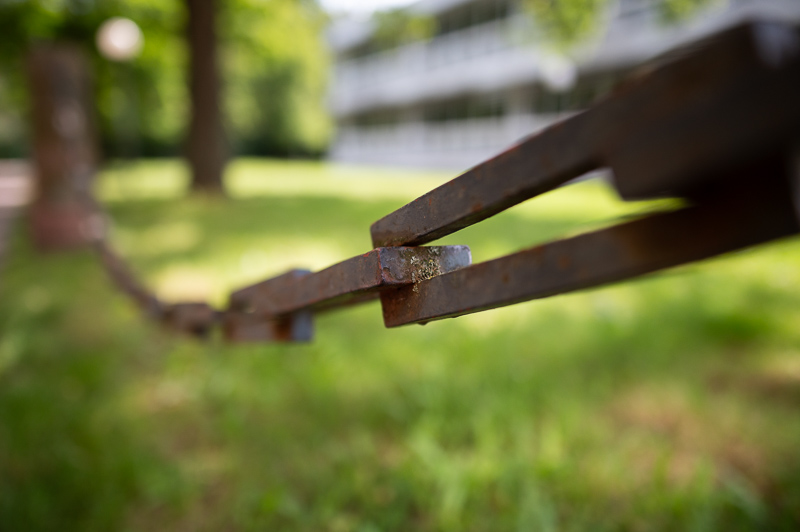

This is a very close focusing lens which definitely helps creating a thin DoF. Thanks to the floating elements design sharpness and contrast are also very good at these distances. Nikon really seems to have perfected this Close-Range-Correction (CRC), as all the fast AF-S wide angle lenses I tried are really good at this.


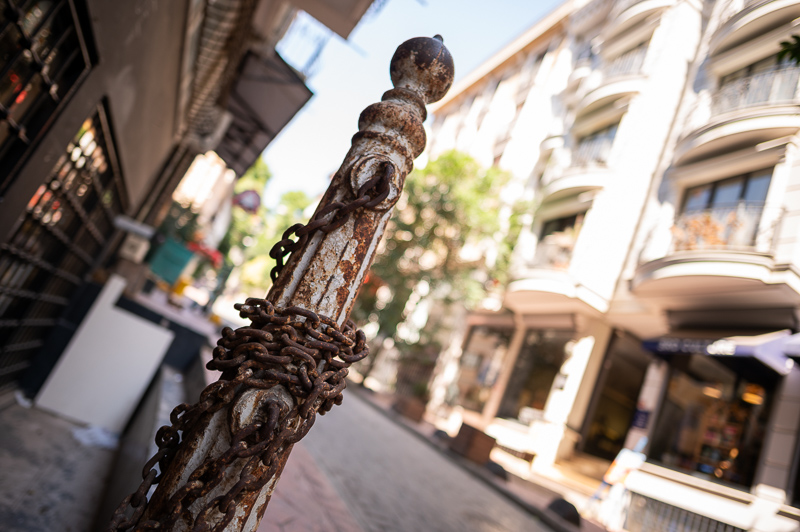
Being a 24mm lens you should pay some attention which objects you place where in the frame, as the perspective distortion can visibly distort things here.

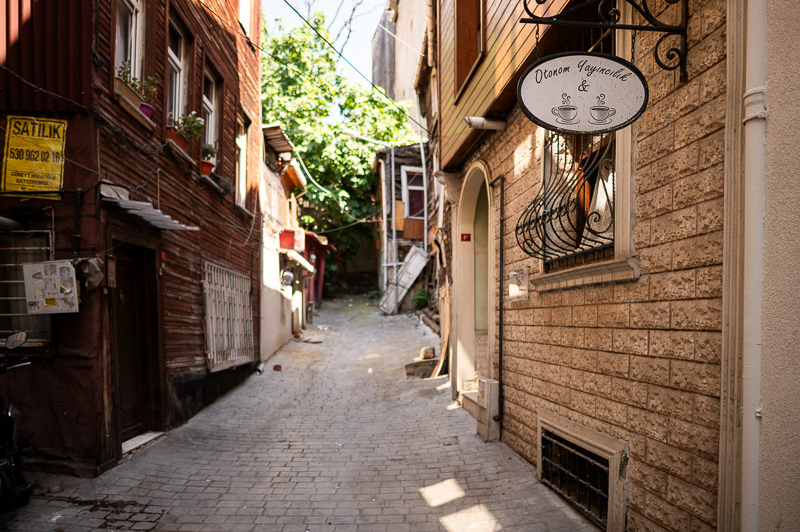

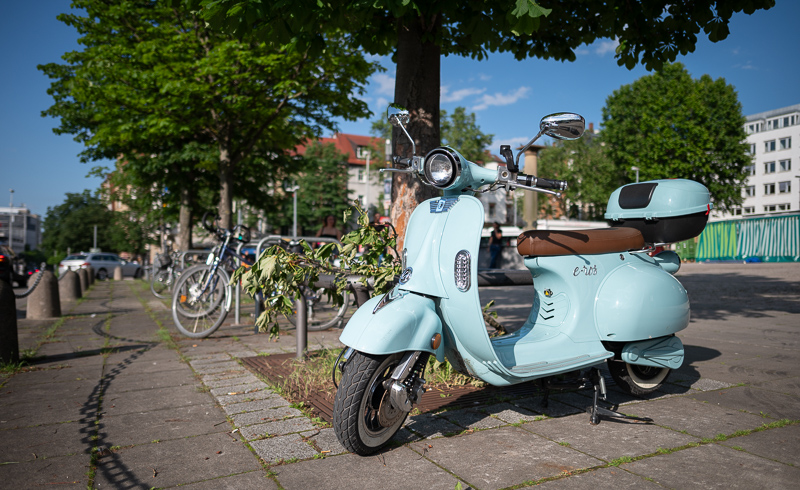
With a 24mm lens – even if it is an f/1.8 lens – when taking pictures of big objects like cars the background will only be faintly out of focus. If that is what you are looking for, a longer (and maybe also faster) lens will be better suited to the task.
Sunstars
The Nikon AF-S 28mm 1.8 with its 7 aperture blades creates nice, well defined sunstars between f/11 and f/16, here the situation is similar, but I think stopping down to f/16 is a good idea if you are after distinct sunstars.
If you want to learn more about this topic have a look at this article.
Chromatic aberration
lateral
While all of Nikon’s f/1.4 and f/1.8 F-mount 28mm lenses and also the Nikon AF-S 24mm 1.4G showed lateral CA on a medium to high level, this 24mm 1.8G is almost free from them.
longitudinal
I already published some reviews of Nikon’s f/1.4 to f/1.8 AF-S lenses and if you already had a look at one of them you already know: correcting longitudinal CA has not been the number one task of Nikon’s optical engineers during the AF-D and AF-S era and that applies to this 24mm 1.8G as well.
Despite featuring two ED elements (compared to zero for the Nikon AF-S 28mm 1.8G), we see strong green and magenta outlining at f/1.8, still noticeable at f/2.8, mostly gone by f/4.0.
Purple fringing is not as big an issue, but can still be spot at f/1.8 and to a much lesser degree at f/2.8.
The performance here is very similar to the Nikon AF-S 28mm 1.8G.
Conclusion
good
|
average
|
not good
|
In the review of the Nikon AF-S 28mm 1.8G I said that it had a bit of a bad timing, as when it was released, not many people were looking for a 28mm f/1.8 lens. Here the situation is actually similar. Had this lens been available while I was still using APS-C cameras I would have definitely bought it. But by the time it finally hit the market in 2015, I already bought my first Sony A7 series camera. And I guess I am not alone, as this is the AF-S f/1.8 prime with the lowest production count.
This is a very solid lens though. The bokeh is nice in most situations, in terms of infinity sharpness it is usable from f/1.8 and looks very good stopped down, flare resistance is really good and the only real flaw are the strong longitudinal CA – a staple of most of Nikon’s fast AF-S lenses. Personally I would have also wished for better sharpness at portrait distances, if you care about that the Nikon AF-S 24mm 1.4G is the better choice.
Because this Nikon AF-S 24mm 1.8G is comparably rare it is still expensive on the used market and for a reasonable premium you can already get the better performing Nikon Z 24mm 1.8 S for your Z-mount camera, which is probably the better choice for those that already made the switch to Z-mount.
buy from Amazon.com | Amazon.de | ebay.com | ebay.de | B&H (affiliate links) for $680 (new) or starting at $400 (used)
Alternatives
You can find many modern alternatives in our Guide to 20-28mm Wide Angle Lenses. I will discuss a few selected alternatives in more detail here.
Nikon AF-S 24mm 1.4G (F-mount):
Some reviews claimed this Nikon AF-S 24mm 1.8G is a much better performer, but to me this is only partly true. If you are mainly interested in landscape/architecture shooting, then yes: this f/1.8 version offers better infinity performance at wider apertures and better flare resistance. If you are looking for a fast wide angle for environmental portraits I would go with the f/1.4 version though, as it offers higher resolution and contrast at portrait distances, leading to a higher perceived subject separation.
buy from Amazon.com | Amazon.de | B&H | ebay.com | ebay.de (affiliate links) for $1.999 (new) or $550+ (used)
Nikon Z 24mm 1.8 S (Z-mount):
Nikon’s latest 24mm 1.8 lens for the Z-mount mirrorless cameras. Going by Martin’s review it seems to perform better in pretty much every category and while more expensive the difference is not huge, so if you already have a Z-mount camera, this is probably the better choice.
buy from Amazon.com | Amazon.de | B&H | ebay.com | ebay.de (affiliate link) for $896
Samyang AF 24mm 1.8 FE (E-mount):
This Samyang shows a very similar performance at the end of the day. If you are an E-mount user this is surely worth a closer look.
buy from Amazon.com | Amazon.de | B&H | ebay.com for $399 (affiliate links)
Viltrox 24mm 1.8 AF (E/Z-mount):
As an E-mount user I don’t find this lens particularly appealing compared to the Samyang AF 24mm 1.8 FE. This Viltrox is heavier, similarly priced and performs worse in some categories (especially bokeh). For Nikon Z-mount users this is currently the only affordable 24mm 1.8 AF lens though.
buy from manufacturer’s store (use the code “PRnet” for 8% discount) | B&H | amazon.com | amazon.de (affiliate links) for $379
Sony FE 24mm 1.4 GM (E-mount):
A lens without any outstanding flaws that really showcases the mirrorless advantage when it comes to fast wide angle lenses.
buy from amazon.com | amazon.de | B&H | ebay.com | ebay.de for $1398 (new) or $800 (used) (affiliate links)
Sample Images

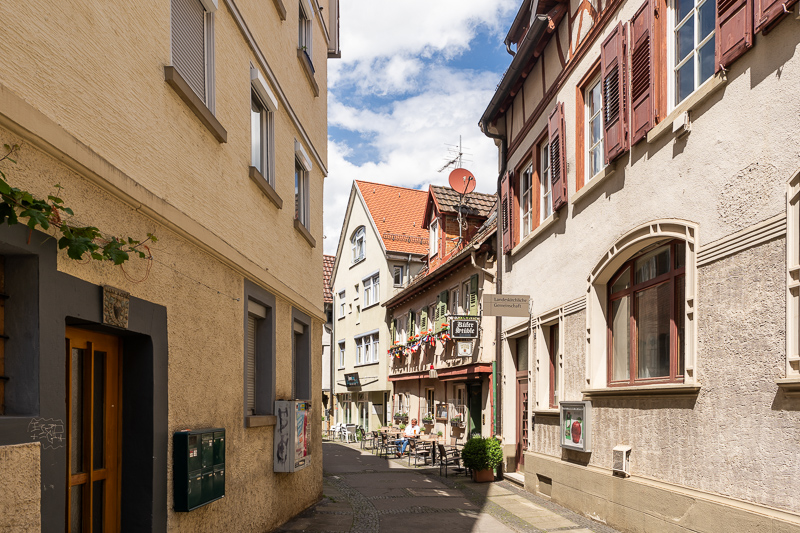

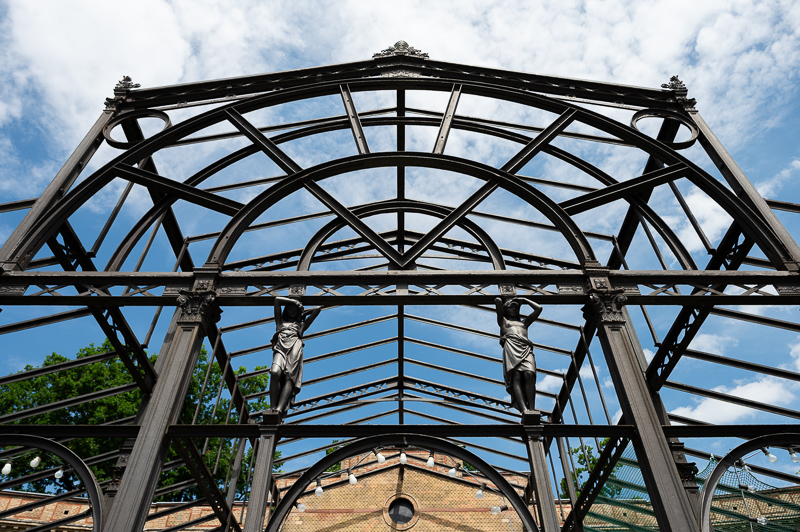

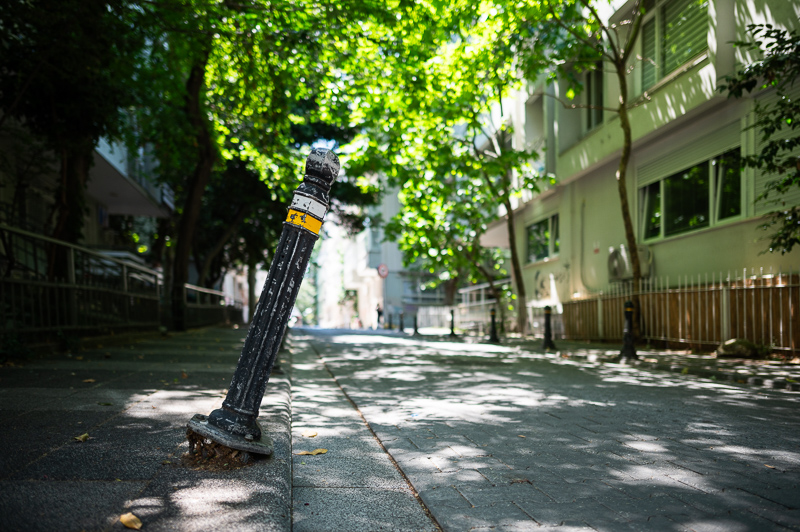


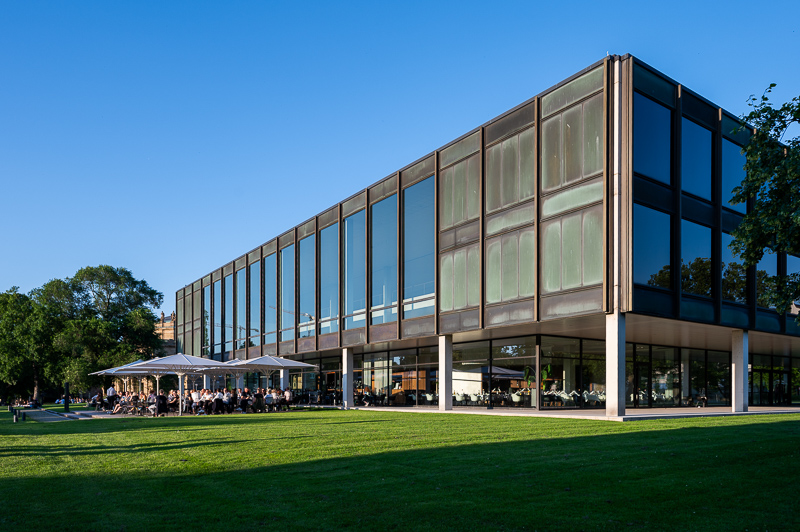



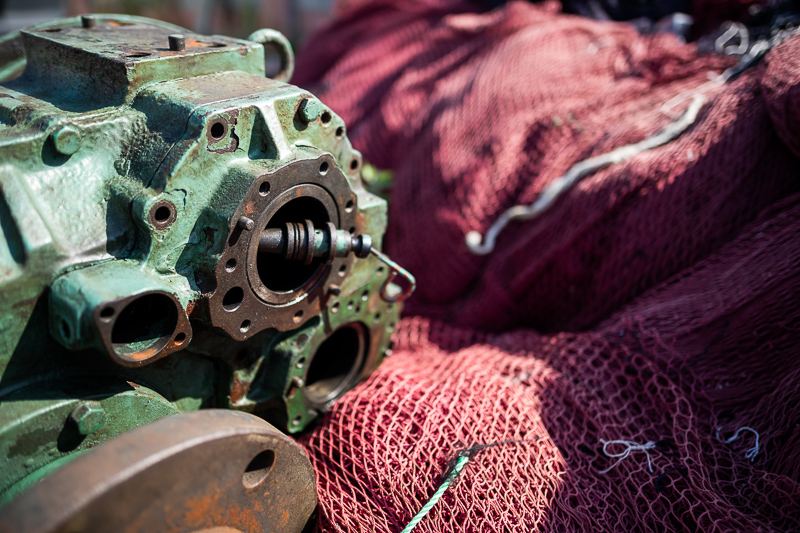


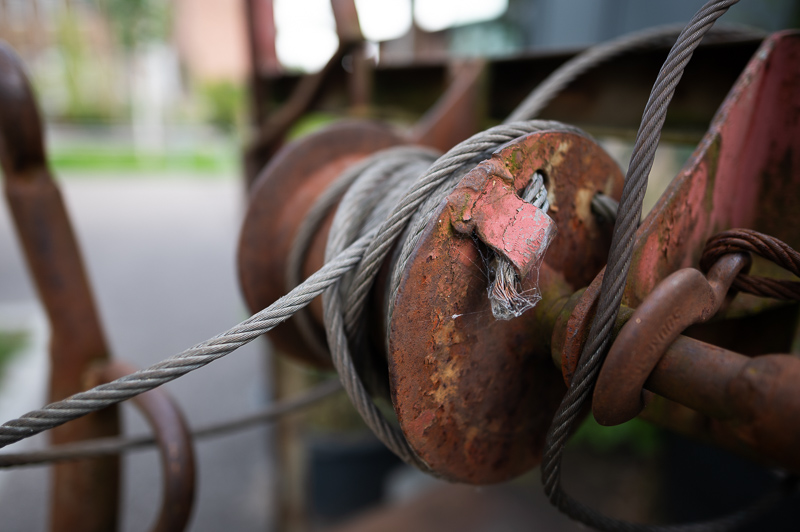

You can find many of the sample images in full resolution here.
Further Reading
- All Nikon Lens Reviews
- Guide to 20-28mm wide angle lenses for Sony FE cameras
- Review: Nikon AF-S 20mm 1.8G
- Review: Sigma 35mm 1.2 Art DG DN
- Reviewing Lenses isn’t really worth it
Support Us
Did you find this article useful or just liked reading it? Treat us to a coffee!
![]()
![]()
![]() via Paypal
via Paypal
This site contains affiliate links. If you make a purchase using any of the links marked as affiliate links, I may receive a small commission at no additional cost to you. This helps support the creation of future content.
Latest posts by BastianK (see all)
- Analogue Adventures – Part 46: Fujichrome Provia 400F (expired) - November 19, 2025
- Review: Irix 45mm 1.4 Dragonfly - November 15, 2025
- Review: Nikon 50mm 1.8 Series E - November 12, 2025


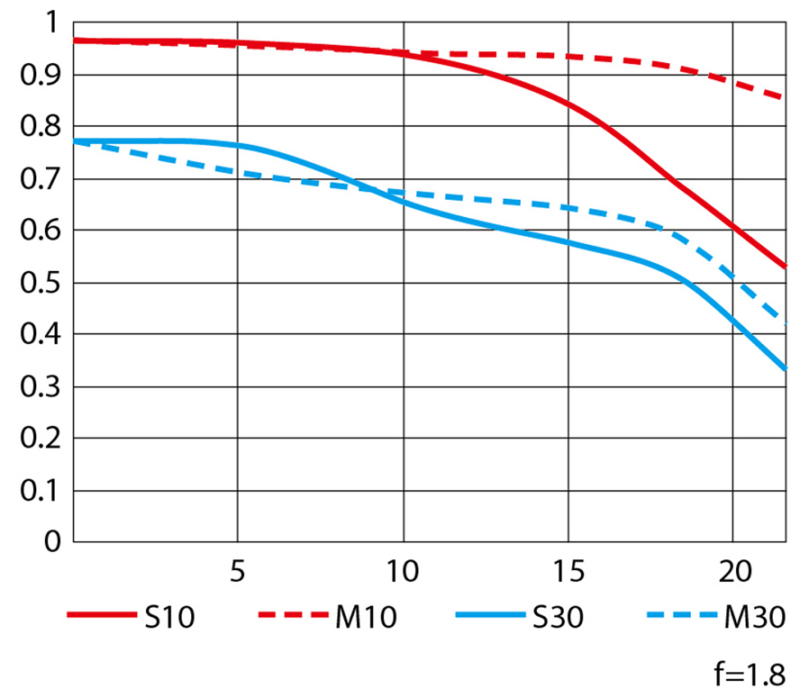
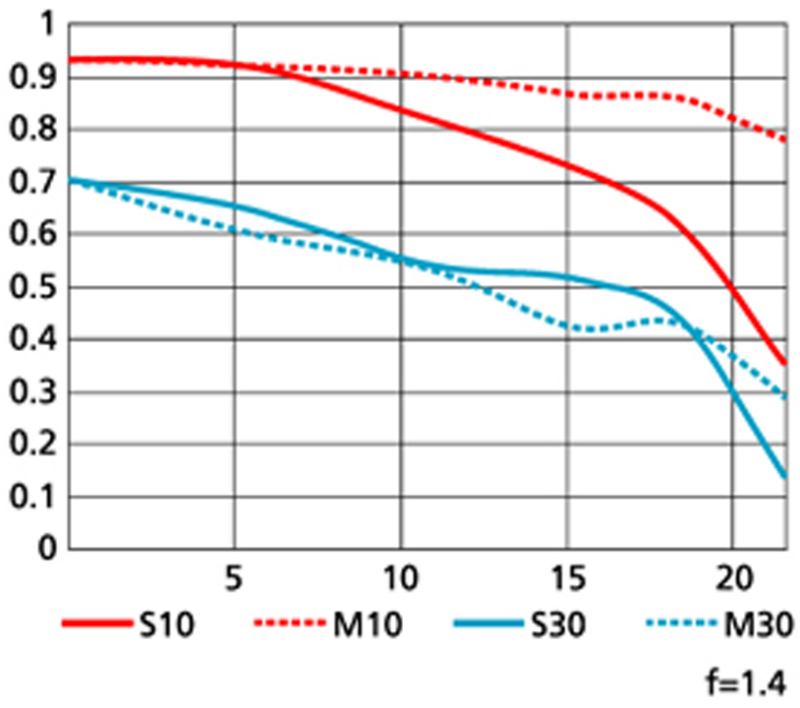
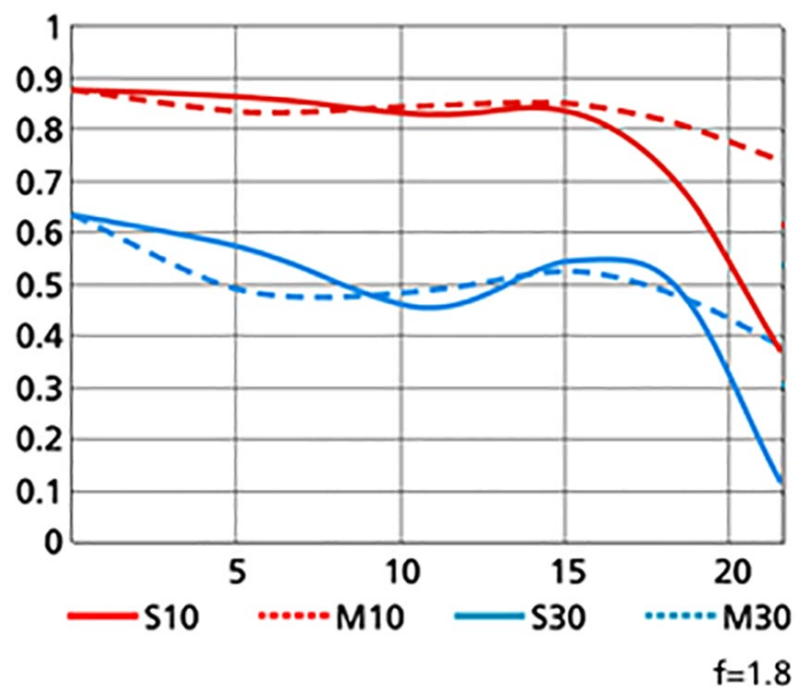

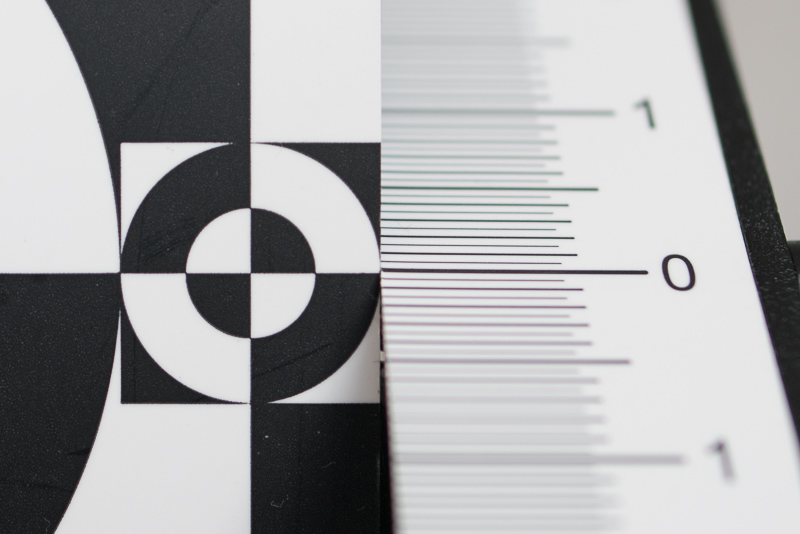

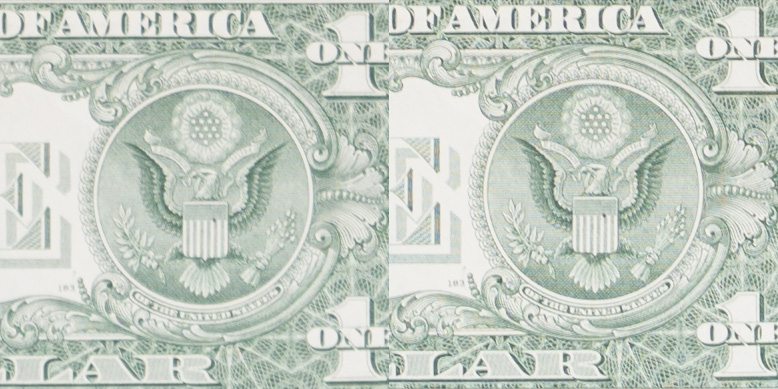








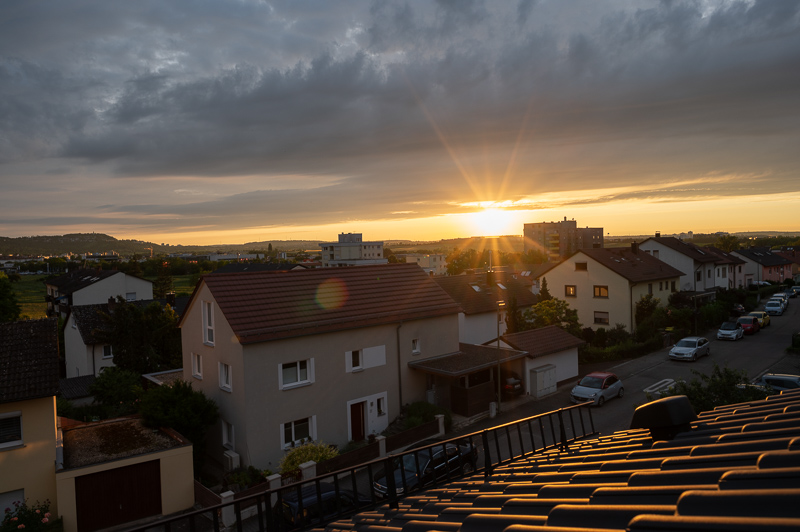

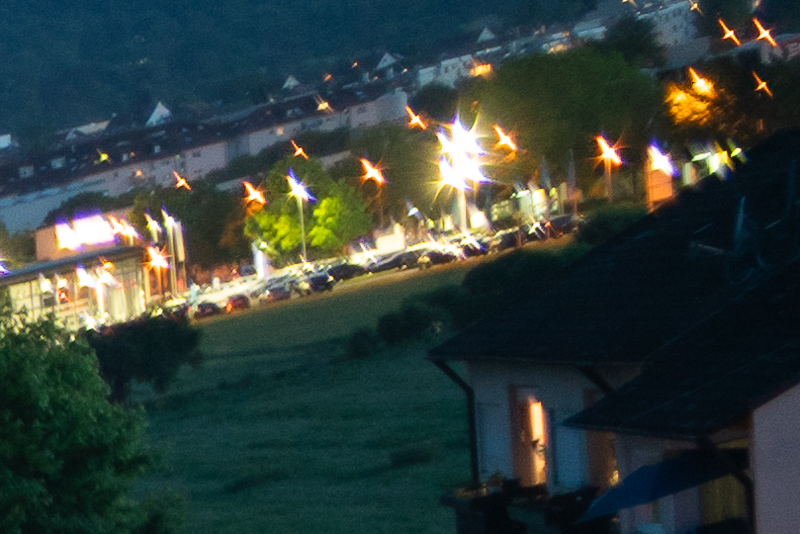
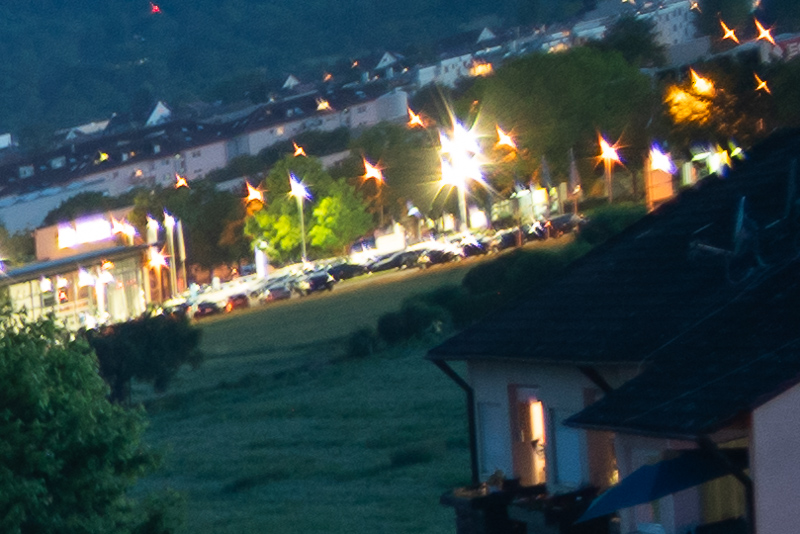
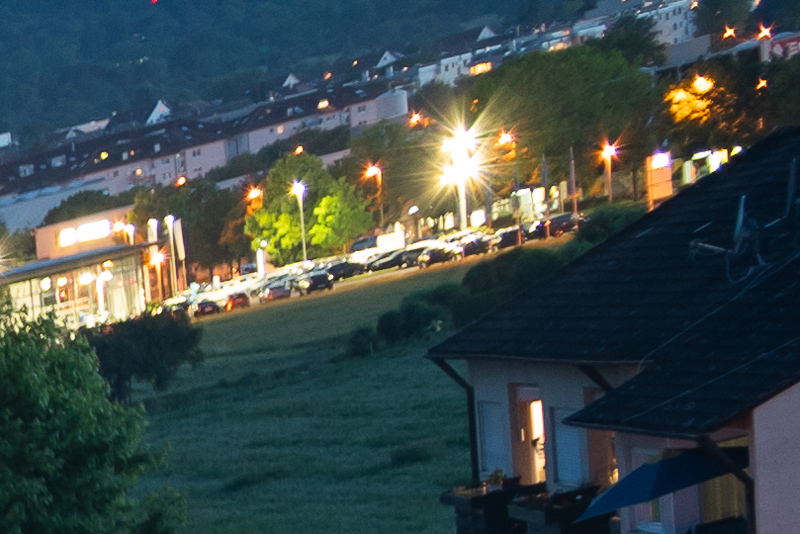

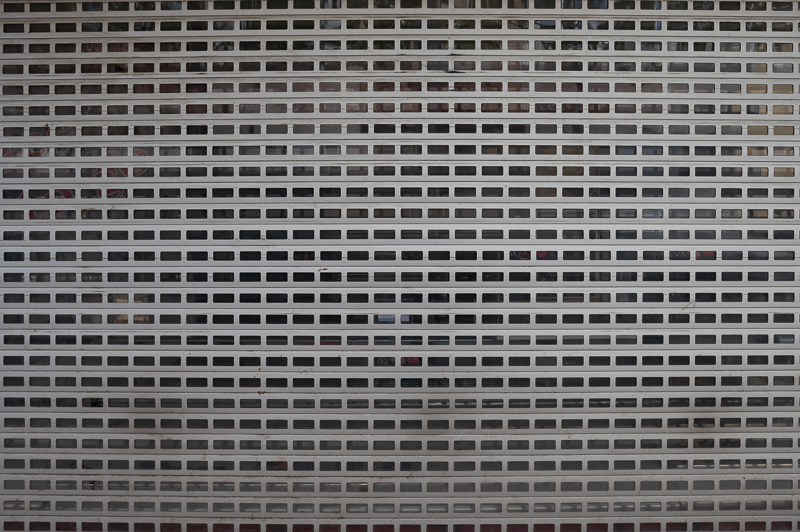

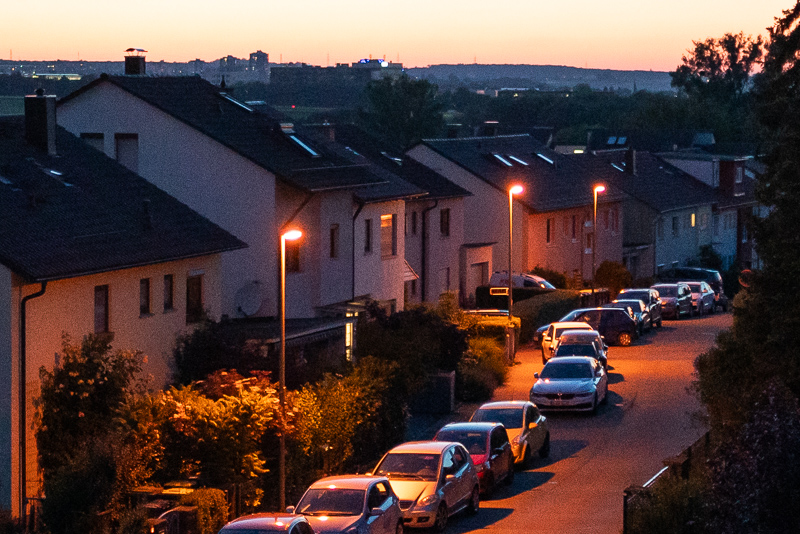
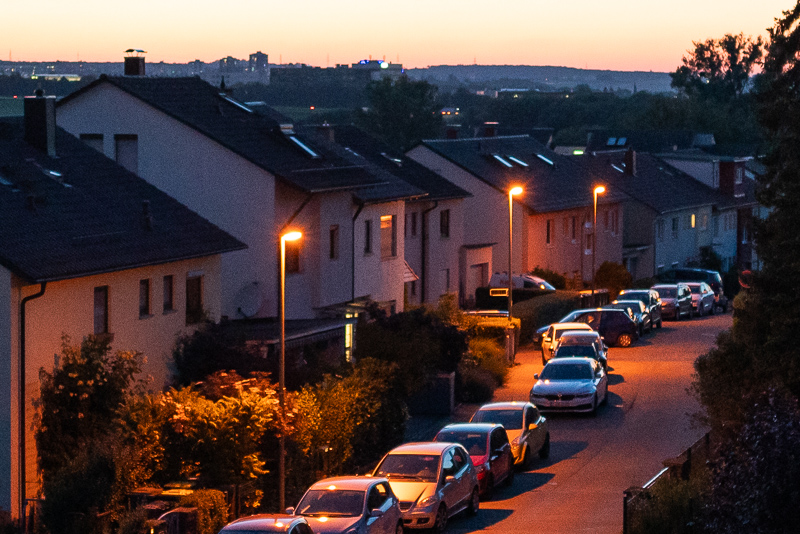

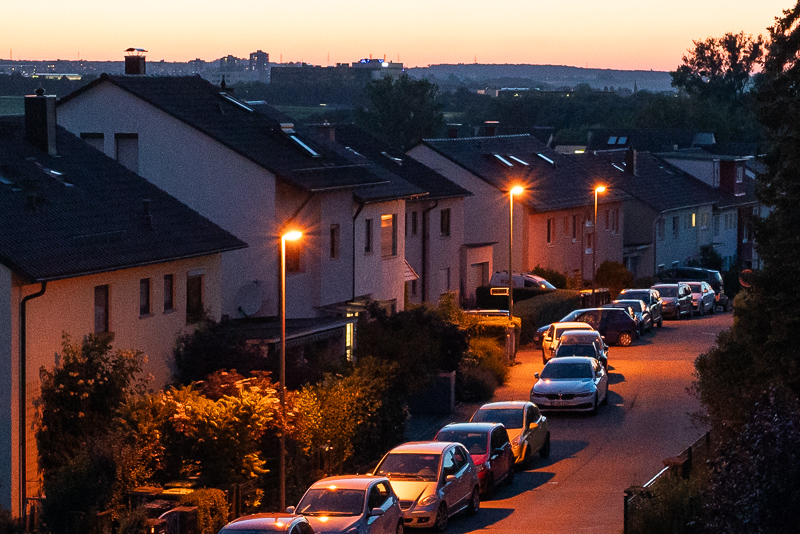

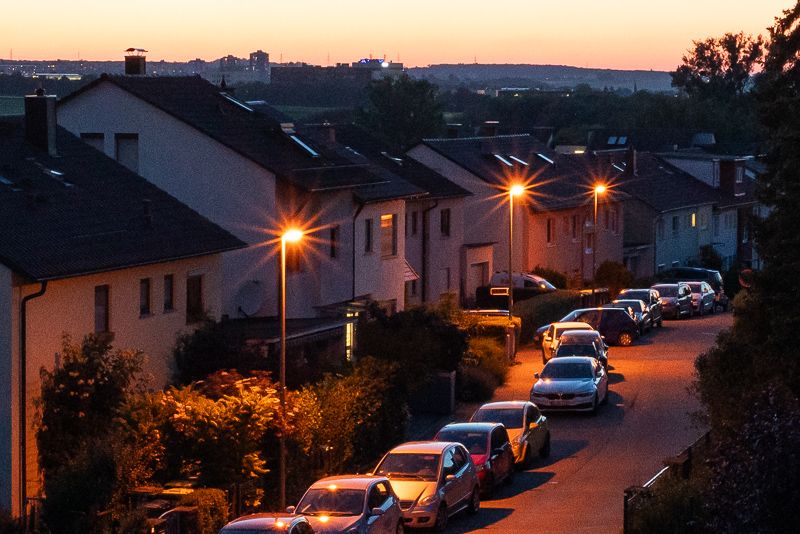
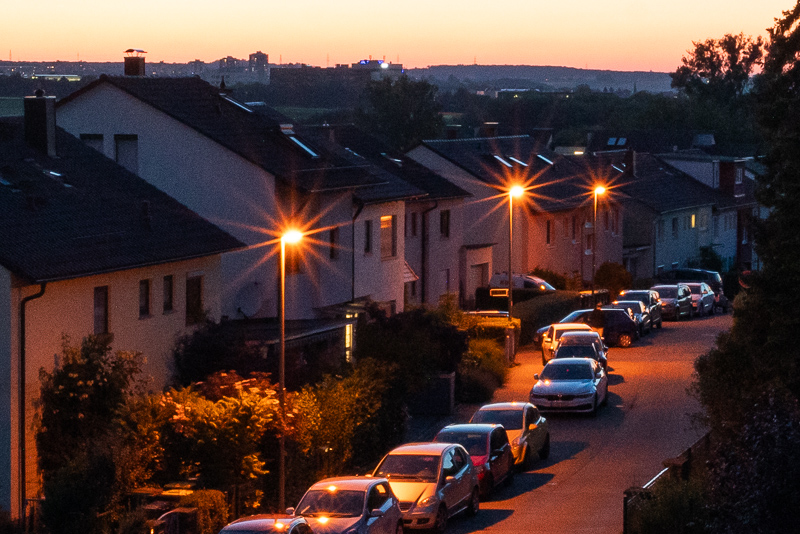
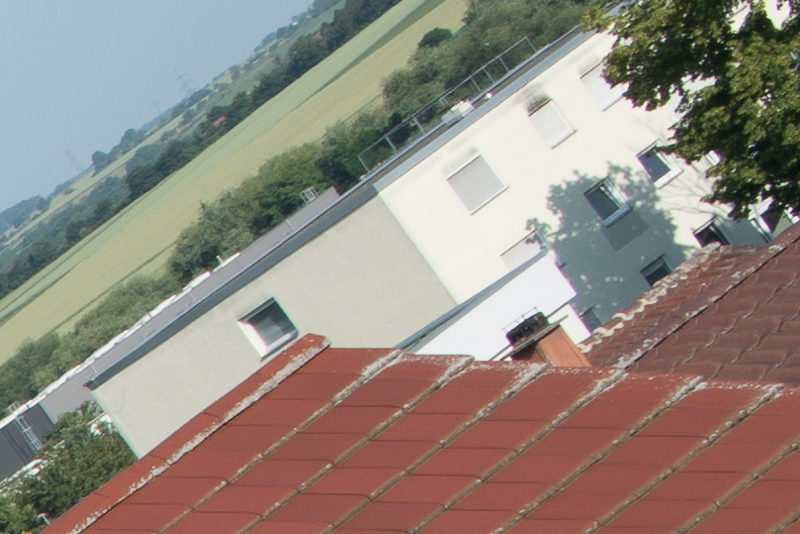
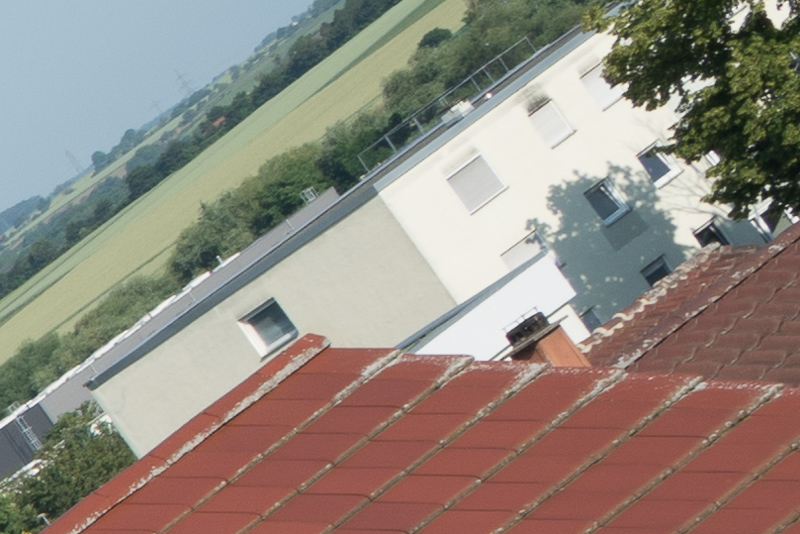


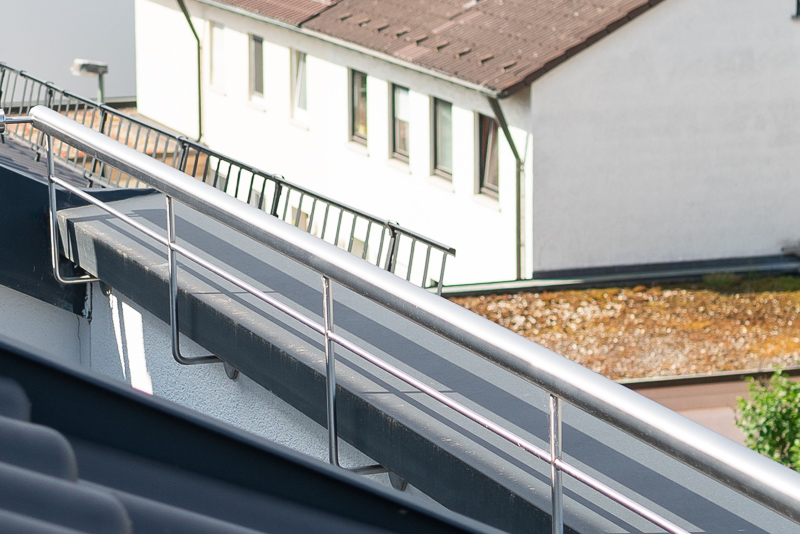


Hi Bastian,
thanks for the great review.
Back then I decided between this lens and the 20mm 1.8G for Nikon F…. at the end it became the latter :).
Now on Z mount I am again tempted by the 24mm options, this time from China. It would be awesome if you could consider reviewing those new options from two of the better known Chinese manufacturers.
Appreciating your work here!
Thank you for the review. This lens passed me by. When I was interested in it, I had a 24-70 mm f/2.8G, and I bought a 20 mm f/2.8D. By that time, I needed such a wide angle for shooting interiors and landscapes. In this situation, there was no benefit from a wider aperture, but the additional angle of view was useful. But after switching to the Z mount, I sold the 24-70 mm f/2.8G and 20 mm f/2.8D. Then I bought the Z28 mm f/2.8, but I sold it because I bought the 24-70 mm f/4S. Later, I bought the Viltrox 20 mm f/2.8, but I sold it because of the green tint in the dark area.
I currently have the widest focal length available, 28 mm, thanks to the Z28-400.
Thanks for the review! Great lens, especially the color and contrast. Though for some reason I always find myself preferring 20mm or 28mm over 24mm. Not sure why but 24 always feels awkward for me